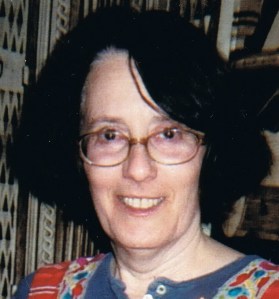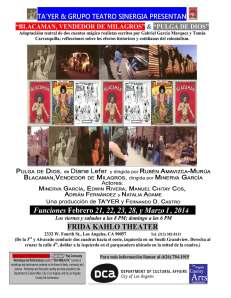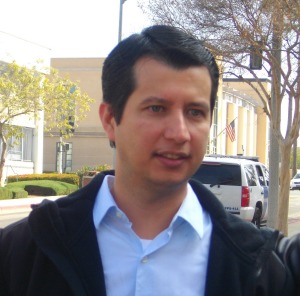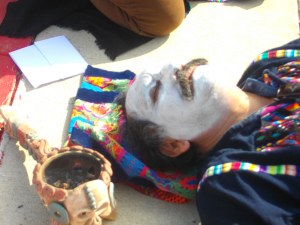So Shepherd Books asked me to recommend five books that I could relate to my own obsessions and my novel Out of Place. I could have said so much more about these books (and added others), but the word limits were strict! https://shepherd.com/best-books/for-recovering-erased-history
Posts Tagged ‘Boualem Sansal’
Recuperating some history
May 16, 2022My Writing Process Blog Tour
February 16, 2014The #MyWritingProcess blog tour is not quite a chain letter. You don’t end up with good fortune or 1,000 picture postcards from around the world or bad luck if you break the chain. It works like this: You get an invitation from an author-blogger to answer four questions about your process. When you do, you also invite three more writers to answer the same questions and carry the tour forward.
And who would know more about writing process than Susan K. Perry, author of Writing in Flow: Keys to Enhanced Creativity? She blogged about her own process last week here and invited me to chime in this week. You can learn more about her fiction and nonfiction by clicking on her name.
Now, here goes:
1) What am I working on?

My novel-in-progress, Out of Place, takes place on five continents. Juggling the characters, events, places, and chronology gets me crazy. I first started thinking about it after 9/11 when international scientists working on research projects here in California found they couldn’t continue their contributions because tightened security clearances meant they no longer had access to the necessary data. In the novel, suspicion focuses on Emine Albaz, a Jewish Turkish hydrogeologist working in the California desert; Rennie, the office manager at the research institute, and Emine’s husband, Oğuz, a Muslim Turkish physician volunteering as doctor to a nomadic tribe in India. They are part of a web of relationship with characters around the globe.
2) How does my work differ from others of its genre?
If we consider it literary genre, I’m sure there are other novels structured in similar ways. But if you want to compare it to espionage or political fiction, those would ordinarily have forward momentum in the narrative while my novel is structured more like the challenge an intelligence officer would face. Old School, effective interrogators didn’t torture anyone or rely on brutality. They gathered seemingly innocuous information until the mosaic pieces fit together and the picture emerged. My novel will jump around but all the sections do connect and ultimately make at least some sense. I’m having a hard time deciding on the order of the sections and then I think of Julio Cortázar’s great novel Rayuela (Hopscotch) in which chapters need not be read in the order in which they are printed.
3) Why do I write what I do?
Obsession. Trying to figure out why things happen as they do, whether it’s in terms of relationships or the politics of the world we live in. I’ve written a lot of advocacy journalism in which I report on issues from a progressive perspective–to make sure that point-of-view is available and that un- and underreported stories get covered. Some of the same issues turn up in my fiction but novels and short stories reach a different readership, make it possible to explore more ambiguous and complex realities, and are, for me, simply more satisfying to write because I never quite know where I’m going, where I’ll end up, or what I’ll discover along the way.
4) How does your writing process work?
Ask me again in six months as it’s in transition!
Those of you who follow my blog probably noticed there hasn’t been much new content lately. Well…I’d never made a New Year’s resolution before, but this year I resolved: No more journalism. No more nonfiction. No more using my eyesight for computer-based work unless it’s for FICTION.
So here I am blogging, but how can a person say no to Susan Perry?
And while I’m cutting back on political activity, too, I did go to San Diego to talk about disrupting the school-to-prison pipeline with concerned members of the University City United Church.

And, yeah, of course I went to Riverside last week in solidarity with the local Guatemalan community. We wanted to observe the sentencing of Jorge Vinicio Sosa Orantes who was convicted of immigration fraud for coming to the US and covering up his responsibility in the 1982 massacre of the people of the village of Dos Erres.
For a change, instead of charging undocumented immigrants with identity theft for using fake Social Security numbers — an act which harms no one but instead benefits the Social Security system because they pay in with every paycheck and will never collect a cent — the feds were on the right side this time. Assistant US Attorney Jeannie Joseph asked for the maximum — ten years in prison — and Judge Virginia Phillips agreed. Sosa Orantes was also stripped of his US citizenship and, assuming all this is upheld on appeal, will face deportation after serving his time. Present in the courtroom and addressing the judge was Óscar Rámirez Castañeda, who survived the massacre because one of the soldiers took him and adopted him.
He was spared, it’s my guess, because of his light skin at a time when the Guatemalan military was committing genocide against the indigenous people. We were joined in front of the courthouse with survivors from targeted Quiché Maya communities.
Óscar’s biological father was at work away from the village when the massacre occurred and so he, too, survived, but neither knew of the other’s existence until DNA analysis by the Fundación de Antropología Forense de Guatemala (Foundation of Forensic Anthropologists of Guatemala). The same anthropologists were able to inform my friend Mario Ávila that the remains of one of his brothers who was disappeared years ago had been identified in a mass grave. Mario wasn’t allowed into the courthouse (even to use the bathroom) because of the face paint.
OK, I know this is supposed to be about my process, but in Spanish, proceso also means trial. So will Sosa face justice once he’s back in Guatemala? He’s protesting his innocence. In the meantime, former president Efraín Ríos Montt has been repeatedly convicted of genocide and each time the sentence is vacated and the case sent back to court. Some powerful people are no doubt nervous about a conviction–including the current president, Otto Pérez Molina, also accused of genocide and war crimes. Attorney General Claudia Paz y Paz has been a powerful defender of human rights and the rightwing is now trying to have her removed from office before her terms expires. So Guatemalan justice? ¿Quién sabe?
But back to my process: New ideas come from engagement with other people and in the world. But then the task is to elaborate ideas into something imaginative. My process used to be absolute concentration for hours or days (or weeks) on end when I wasn’t working for a living. Especially when working on a novel, I want to remain immersed in the fictional world. But 15-hour days at the computer, what may be the worst ever case of Computer Vision Syndrome damaged my eyesight. It’s limited the amount of time I can spend looking at the screen. Eyestrain also causes fatigue and when my eyes are tired, my brain stops working. My process has become a slow one, taking lots of breaks, creating one piece of the mosaic–whether fiction or nonfiction–at a time.
Revision is something I can do anytime, anywhere but creating new material does require conditions. I used to prefer writing first thing in the morning while still in a hypnogogic state. That changed when I adopted a cat. First thing in the morning, she had to be cuddled and fed. Shower, etc. And then email with my coffee. Once the coffee mug is in the sink, I get to work. That hypnagogic state still opens creative doors only now language, ideas, characters keep me awake at night as I remain stuck on sleep’s threshold.
Since I can’t spend hours at the computer, I do spend time letting material percolate. The unconscious gets to work when I’m doing what I enjoy doing anyway: walking, driving, pampering the cat, doing behavioral observations for the research department at the zoo, or hiking– alone, so there’s no conversation except what’s going on in my head. Working in theater also gets me out of the apartment. My one-act play, Pulga de Dios (Spanish version of God’s Flea) will premiere Friday evening as a Grupo Ta’Yer project at Rubén Amavizca-Murúa’s Frida Kahlo Theater, in a double bill with Fernando Castro’s Blacaman.

And as I’ve been a lazy blogger, let me catch up with a few comments here. Now that I’ve cancelled Time Warner (at last! hooray!), I have no TV and will spend more time reading. On paper, on the page, in BOOKS and not on a Kindle.
I’ll read hoping for more strange synchronicity. It was only after we returned from Belfast to our respective countries that Tania Cañas and I read Nor Meekly Serve My Time and learned that the IRA hunger strike was broken when families removed their sons and brothers to Musgrave Park Hospital–just steps away from where we and the ImaginAction team was housed. (For an account of our work, check the previous blog post called “Provocations.”)
So I was thinking a lot about how we go around often oblivious of the significance of places that hold profound meaning to those who know. In that state of mind, I read Teju Cole‘s novel, Open City, in which the narrator, of Nigerian and German descent, wanders New York City more aware of the forgotten history at every site and of history’s many atrocities than he is of his own story. The brothers in Boualem Sansal’s remarkable novel, The German Mujahid, are raised in Paris, of German (again!) and Algerian parentage. They also must confront hidden and not so hidden histories of genocide and violent intolerance. At the same time, I read (and looked at–since it’s as much a coffee table book as a book-length poem) Susan Suntree’s Sacred Sites: The Secret History of Southern California. Her poem, too, changes the way we feel about the ground we take for granted beneath our feet, first by offering how Science tells the creation (and repeated cataclysmic destruction) story of this region and then how the story is told in the various traditions of California Indians.
Enough screen time!
Next Week: On February 24th, please get to know:
Laurie Cannady, Associate Professor of English at Lock Haven University. Her memoir, Have a Little Piece of Me, is forthcoming with Etruscan Press. It will be published Fall 2015.
(Have a Little Piece of Me is an important memoir by an extraordinary woman. It’s also a tribute to Laurie’s mother who did everything the way you’re supposed to, against all odds, and, instead of rewards, faced trouble after trouble. I was lucky enough to read much of this book while in-progress. For those of you familiar with Nathan McCall‘s classic, Makes Me Wanna Holler, about his evolution from confused and violent incarcerated youth to a respected journalist, be sure to get your hands on Laurie’s book. She grew up in the same neighborhood as McCall, but hers is the perspective of a young woman with good reason to fear the poverty, dehumanization, and misogyny he highlighted in his memoir. They have since met as fellow writers and he is a champion–as I am–of her work.)
She blogs at: http://lauriecann.wordpress.com
Giano Cromley was born in Billings, Montana. He’s the author of the novel, The Last Good Halloween, has been featured in the Chicago Sun-Times’ Hot Chicago Writer Blog, and his writing has appeared in The Threepenny Review, Literal Latte, and The Bygone Bureau, among others. He is a recipient of an Artists Fellowship from the Illinois Arts Council. He teaches English at Kennedy-King College and lives on Chicago’s South Side with his wife and two dogs.
(I met Giano one cold January in Chicago–is there any other kind?–because he married Naty, the roommate who kept me sane during one of my visits to Colombia. It was a delight to discover that he and I admired the same fiction and had more to talk about than was possible during my short stay. Last year, when he published The Last Good Halloween, I was excited to read it and to see Tortoise Books give it an enthusiastic launch. I found again we’re on the same wavelength. Giano’s insightful, often funny novel illuminates something I think about a lot: how a basically good kid can get himself into lots of trouble.)
Giano blogs at http://www.gianocromley.com/blog-that-g.html
Julia Stein‘s seventh book of poetry, What Were They Like? was published March 2013. She has edited two books of poetry: Every Day is an Act of Resistance: Selected Poems of Carol Tarlen by the brilliant S.F. poet Carol Tarlen who died in 2004, and Walking Through a River of Fire: 100 Years of Triangle Fire Poetry. She is the 2011 Joe Hill Poetry Award winner. She also has been a journalist, literary critic and has just finished a novel about the 1960s.
(What Were They Like? powerfully evokes the lives of people affected by the so-called War on Terror. Let me add that it was Julia who introduced me to Susan Suntree’s work. And besides being a strong progressive voice in poetry and a tireless advocate for the work of other writers, Julia has long been a champion of the rights of adjunct faculty, which includes her fight for what adjuncts sorely need and deserve–union membership.)
She blogs at http://californiawriter.blogspot.com/
Thanks for accompanying us this far. Now my eyes are crossed and I remember why I don’t want to do this!

